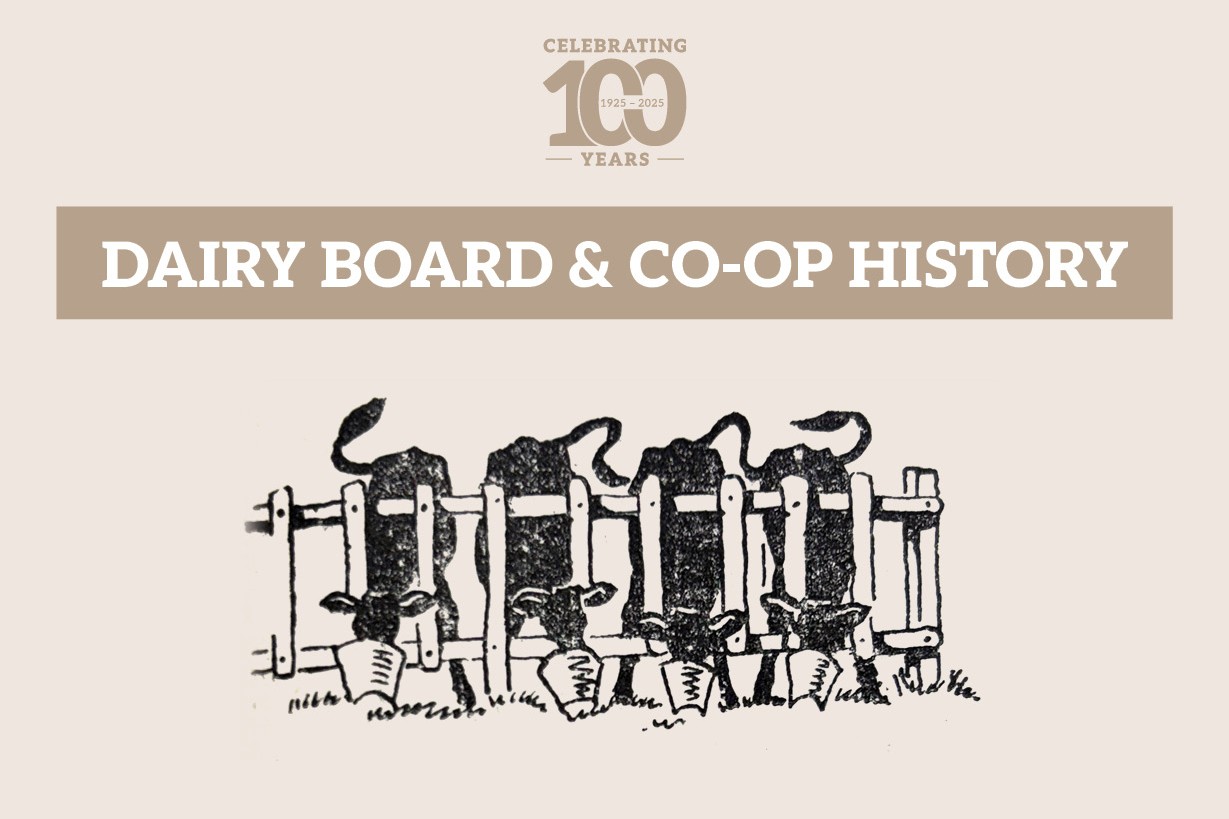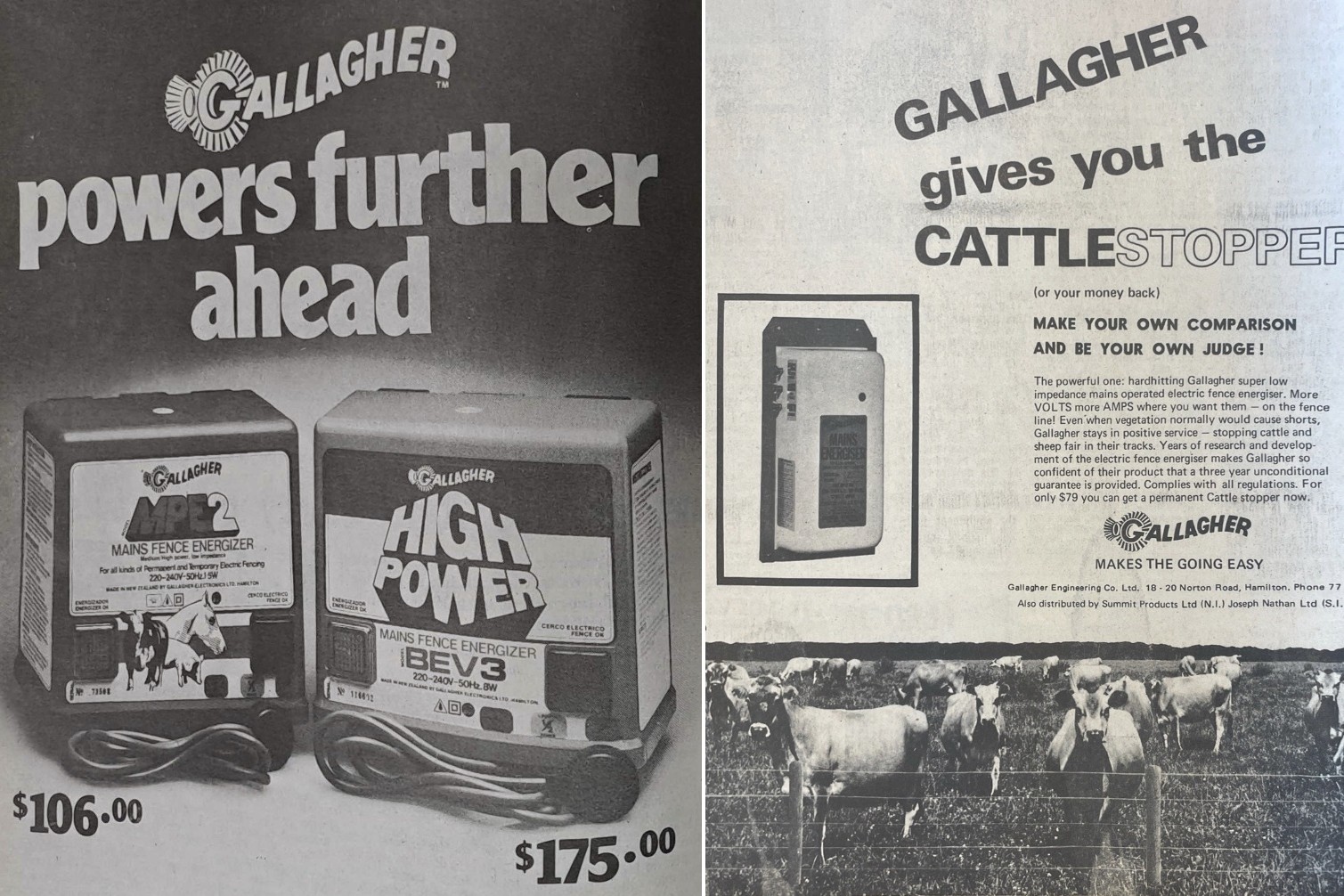NZ Dairy Board History
Explore the formation of New Zealand’s dairy industry – from the creation of the Dairy Board, to the co-operatives and industry-defining mergers. Learn about the policies and pioneering individuals who helped shape the landscape of the industry we know today.

A united industry
The New Zealand Dairy Board was first established in 1923 as the Dairy Produce Export Control Board. It was set up to manage the export of dairy products and give the growing sector some cohesive power in the wake of price crashes after WWl. While it was backed by an Act of Parliament, giving it a number of legislative powers, it did not have single-desk selling rights or sole marketing powers. Exports were largely headed for the Motherland – the United Kingdom – by ship and the board’s strength enabled significant savings in transport with savings also coming from cool storage management and other co-ordination.
For a brief period around 1935, the board had a degree of marketing control but the Labour government then brought in a guaranteed minimum price and set up a state marketing programme with varying success. There was no shortage of forthright debate in The Dairy Exporter’s pages over the strategies and outcomes.
Setting the Milk Price
From the late 1930s through to the 1960s, another world war, followed by significant price volatility and the distortions created by government intervention here and overseas all created issues at the grassroots and industry levels.
A stabilisation account was set up by the government to help manage farmer returns and in the late 1940s a Dairy Products Marketing Commission was established to manage setting of the guaranteed minimum price and marketing while the board maintained its role managing dairy company export logistics and processing standards. The commission had statutory powers and included government and dairy industry representatives.
The minimum price was a topic of much contention over the years as farmers argued the price did not rise in line with farm costs. In 1961 the government enabled legislation bringing the commission and the board together as the NZ Dairy Production and Marketing Board. The Act was amended in 1965 to drop Production and Marketing from the name and so it became the New Zealand Dairy Board.
Marketing to Research
Right from its earliest days in the 1920s the board was strongly connected and accountable to grassroots farmers through its elected representatives. Its activities were far wider than getting dairy products to market. In 1927 it was involved in the establishment of the Dairy Research Institute and then in the breeding and improvement of the national herd. Its role grew to include farm consulting officers who provided advice and served as the extension arm, taking scientific research findings to farmers.
Strength of the Dairy Board
Through the 1970s and up until 2001 the NZ Dairy Board had to contend with trade barriers, tariffs and duties. Its leaders and staff worked closely with government in trying to keep the lines of trade open in established markets while they deftly manoeuvred around the globe to open new ones. Ventures in Russia through the 1980s were of the intrepid kind at times.
Asia and South America were targeted too. Savvy marketing and a focus on added value brands boosted success in Asia and the purchase of Chilean company Soprole in the late 1980s was the start of new partnerships in the Americas.
The board’s strength throughout its history has been its people. Legends were created and in the later half of its era notable names such as Bernie Knowles, Murray Gough, Dryden
Spring and Jim Graham led the board and its management.
In 2001, after a decade of dairy co-operative mergers and a shift in government attitudes to legislation backed single-desk-selling, the board’s assets were apportioned back to the co-operatives in parallel with the mega-merger that effectively brought the merged co-operatives and the board together in one entity.
‘Century of Achievement 1871-1971’, September 1971
Copy of 'Century of Achievement 1871-1971', September 1971‘Introducing Fonterra’, October 2001
Copy of 'Introducing Fonterra', October 2001




